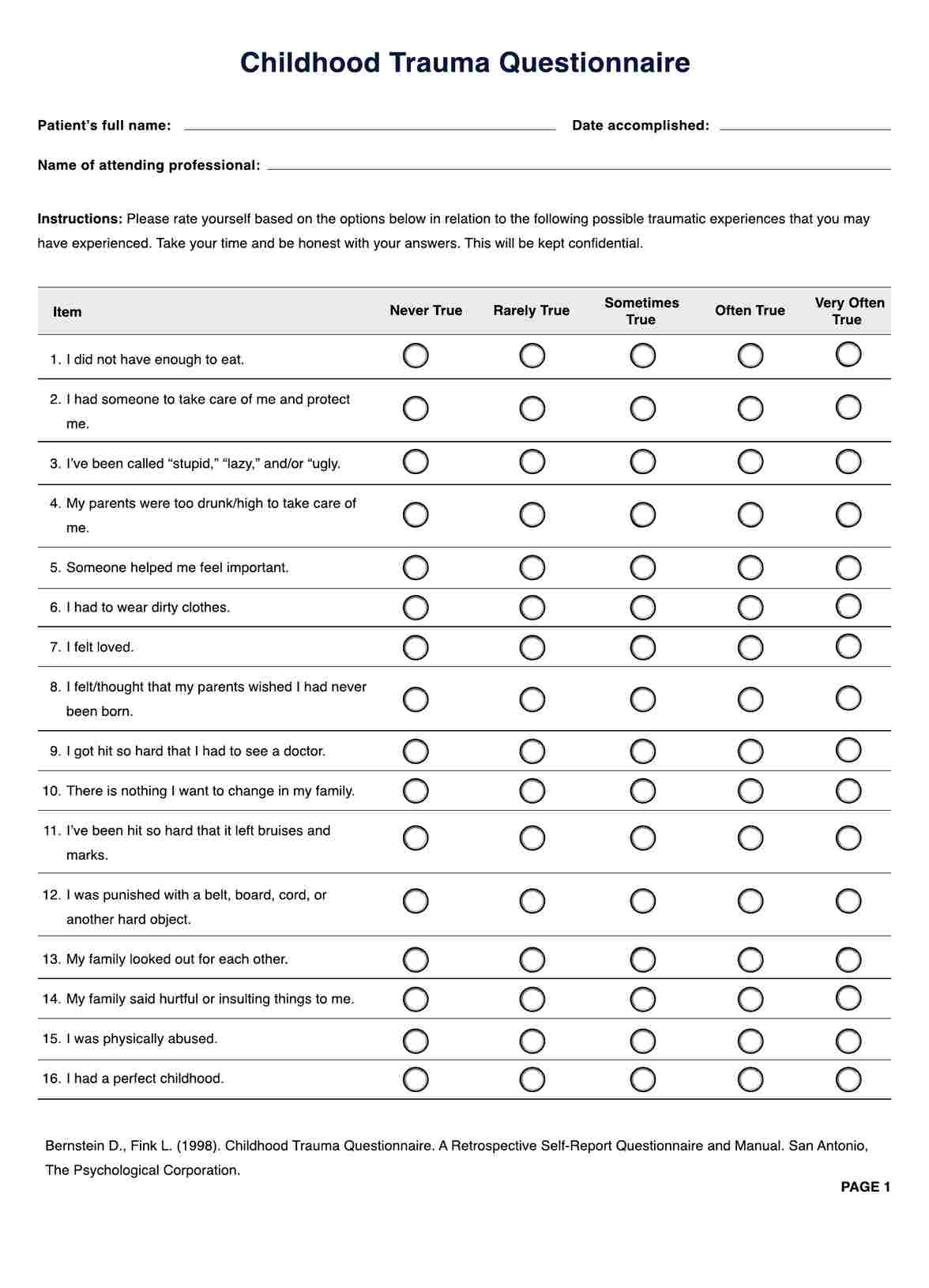The patient must be aged 12+. Younger patients might not have processed what they have been through, so other assessments might be better for them.

Childhood Trauma Questionnaire
Use the Childhood Trauma Questionnaire to learn if your patient's trauma can be traced back to their childhood.
Childhood Trauma Questionnaire Template
Commonly asked questions
No. The Childhood Trauma Questionnaire is a screening tool that asks about the patient’s history. If you need to diagnose your patient, please refer them to an expert who specializes in diagnosing people with trauma-related disorders. If you are that expert, please conduct comprehensive examinations first and use actual diagnostic tools.
The limitation of the Childhood Trauma Questionnaire is that it may not cover the full extent of a patient’s trauma, nor all trauma types. This is why it was mentioned earlier that just because the patient got a score that falls under the None severity level, that doesn’t mean they actually don’t have trauma. They might, so it’s best to conduct further assessments and get them to talk during your appointments. Their self-ratings may not even be enough, so make sure to have them elaborate as best as they can when conversing with them.
EHR and practice management software
Get started for free
*No credit card required
Free
$0/usd
Unlimited clients
Telehealth
1GB of storage
Client portal text
Automated billing and online payments











